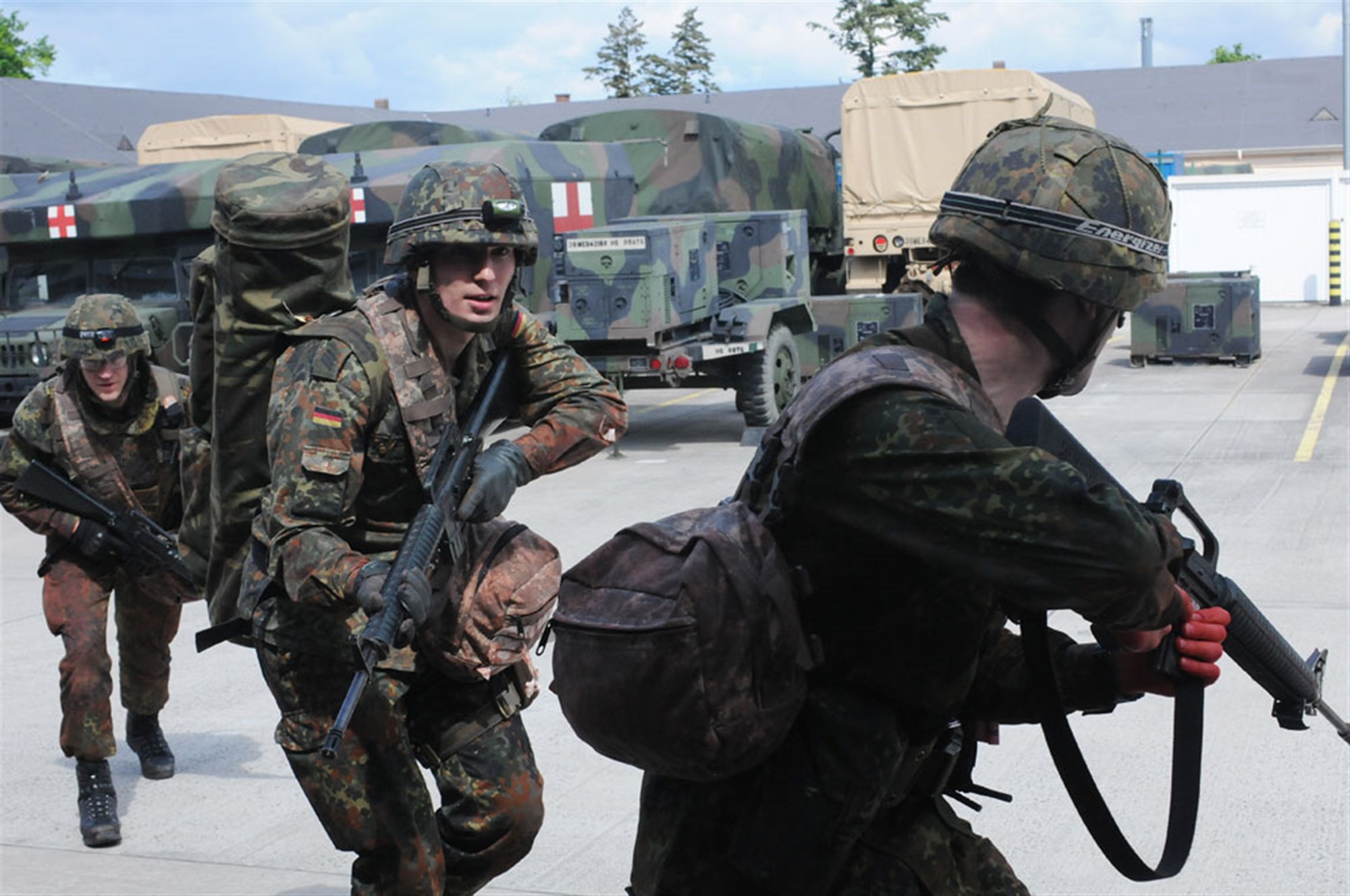HEIDELBERG, Germany -- U.S. Army Europe Soldiers from the 421nd Multifunctional Medical Battalion, 30th Medical Command, hosted a combat life saver course for Bundeswehr service members from NATO and reserve units, and German Polizei, May 12.
The CLS course was held at the "Viper Pit," a medical training facility, in Wiesbaden, Germany.
The CLS course teaches Soldiers about the basics of first aid and how it can be the difference between someone living or dying on the battlefield.
Working together with allied nations is the pinnacle of U.S. Army Europe's mission abroad. Learning a mutual language of combat operations, such as CLS, lends a hand to further USAREUR's relationship with its allied nations.
The Viper Pit teaches students about combat life saver skills, allowing those trainees to employ those skills in a room that simulates the most stressful conditions possible.
"[The Viper Pit] is a stress inoculation training center," said Staff Sgt. John Lacroix, a support operations staff and medical plans noncommissioned officer with 421st MMB and an Apple Valley, Calif., native. "Stress inoculation is basically [Viper Pit personnel] injecting threat stress scenarios into our training and then recreating them over and over again, making them increasingly more stressful."
In the Viper Pit, dummies with simulated wounds are situated across the floor of the dim, fog-laden room. Trainees must crawl across the floor of the garage-sized room, with the sounds of gunfire, wailing sirens and instructors yelling commands through a megaphone; find their simulated patients, treat their wounds and bring them to safety.
Bundeswehr Reserve Oberleutnant Oliver Oswald had been working with Lacroix to get Bundeswehr involved with training at the Viper Pit.
"It's incredible. It gives very good scenarios shown in a very small room under physiological pressure," Oswald said. "It's not routine; you've got smoke, yelling, explosions and gunfire. It's not something you usually have in a normal CLS course or in a class room."
Through the use of the Viper Pit, the 421st MMB personnel take an unconventional approach to teaching combat life saving techniques to its trainees.
"It's not a realistic scenario, it's just as many stressors as we can give them," Lacroix said. "We start off very basic and then progress to increasingly more stressful scenarios."
Lacroix added that following each scenario, trainees participate in a scenario recap to reflect on how they did and how to make it better next time.
Lacroix, the creator of the Viper Pit, approached his battalion with the idea more than a year ago. Construction on the facility finished in May 2011.
Since November 2011, Lacroix, who has been in the Army for seven years, has trained more than 1,000 service members from eight major commands and three different countries. He has done medical sustainment through use of the Viper Pit for U.S. Army medics, the CLS course, and has also trained the Wiesbaden Boy Scout troop in first aid.
"Our ultimate goal is to provide as much of a stressful environment as possible so they can mitigate that stress when they encounter the real-life stress of their fellow service members being injured," Lacroix said.
The $22,000 facility is equipped with several 180-pound dummies, fog machines, infrared camera system and medical supplies. Some of the supplies used by the Viper Pit were donated to them by service members and medical professionals.
"Since the Bundeswehr is part of NATO and also an allied partner of the United States, we have common missions together," Oswald said, whose rank is equivalent to a U.S. military first lieutenant. "It should be mandatory for us to have a common language on the mission, and that is what we found here. We can exchange positive and negative ideas every time we do training like this."
Although Lacroix was in the lead for training the Bundeswehr, Leutnant Lars Hönig, a medical student at the University Medical Center in Mainz, Germany, assisted with the Viper Pit and conducted a German basic Emergency Medical Technician training on the last day.
"In places like Afghanistan, it's much harder than this," Honig said, whose rank is the equivalent to a second lieutenant. "I think it's important to learn these techniques, to know what to do when someone is hurt, the medical procedures, to get used to the material."
Taking opportunities, like the Viper Pit, to train alongside of the Bundeswehr, and other allied nations, ensures future good-natured relations with our partners and a mutual understanding both on and off the battlefield.
"It's absolutely amazing training with the Bundeswehr. I learn something new from them every time," Lacroix said. "It's long training, but it's a good partnership and I think that's right in line with General Hertling's intent for USAREUR, partnership."









